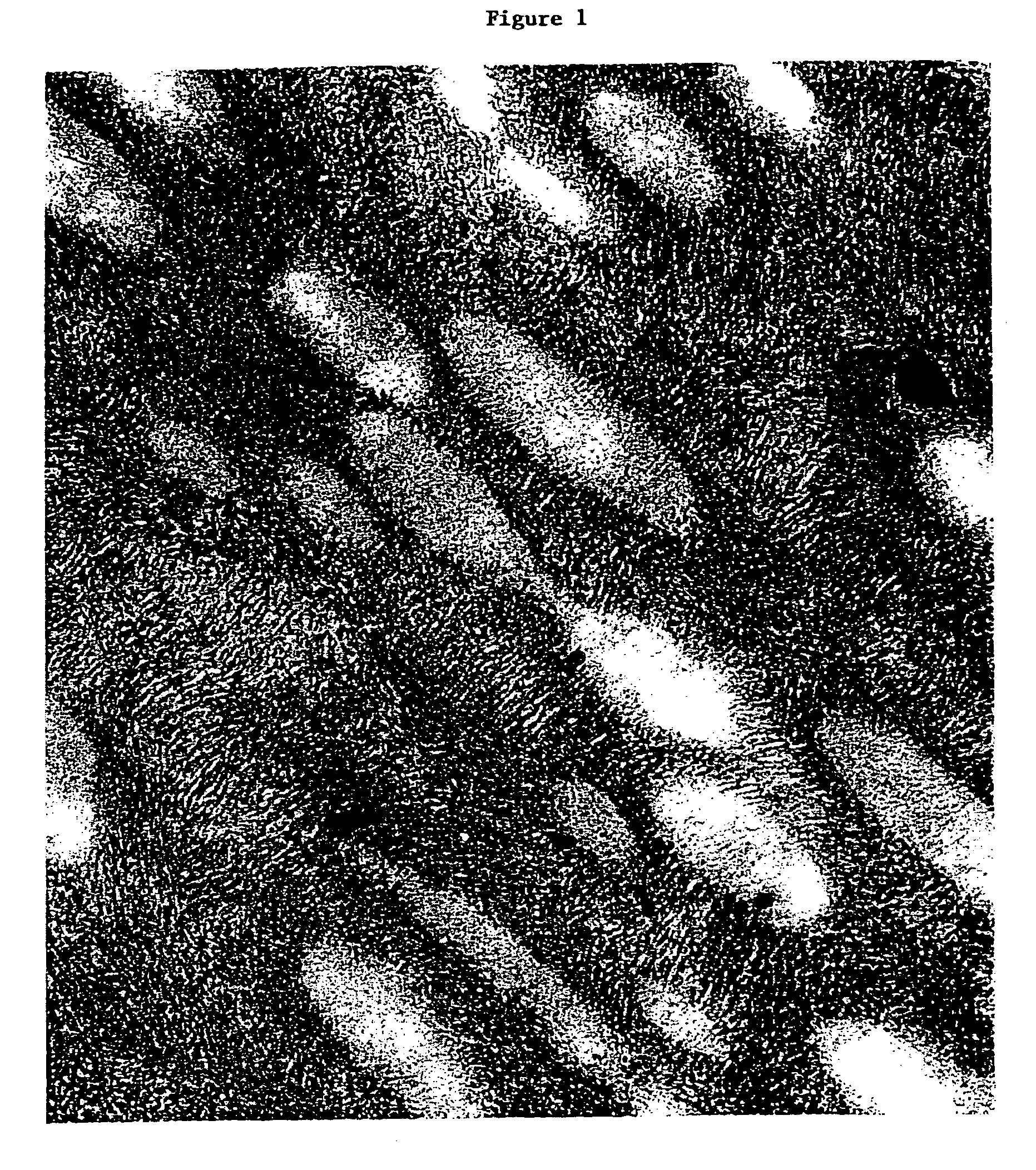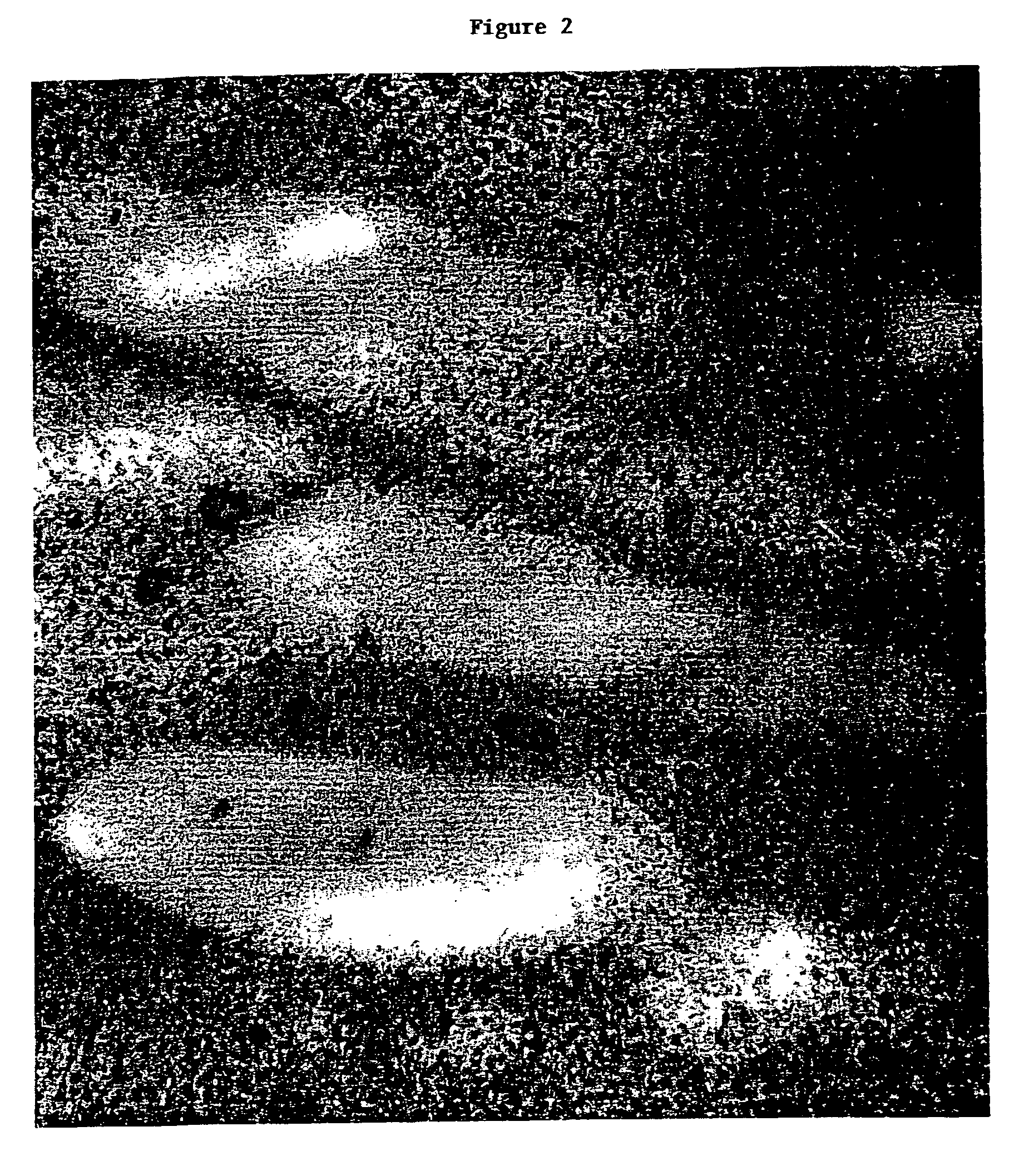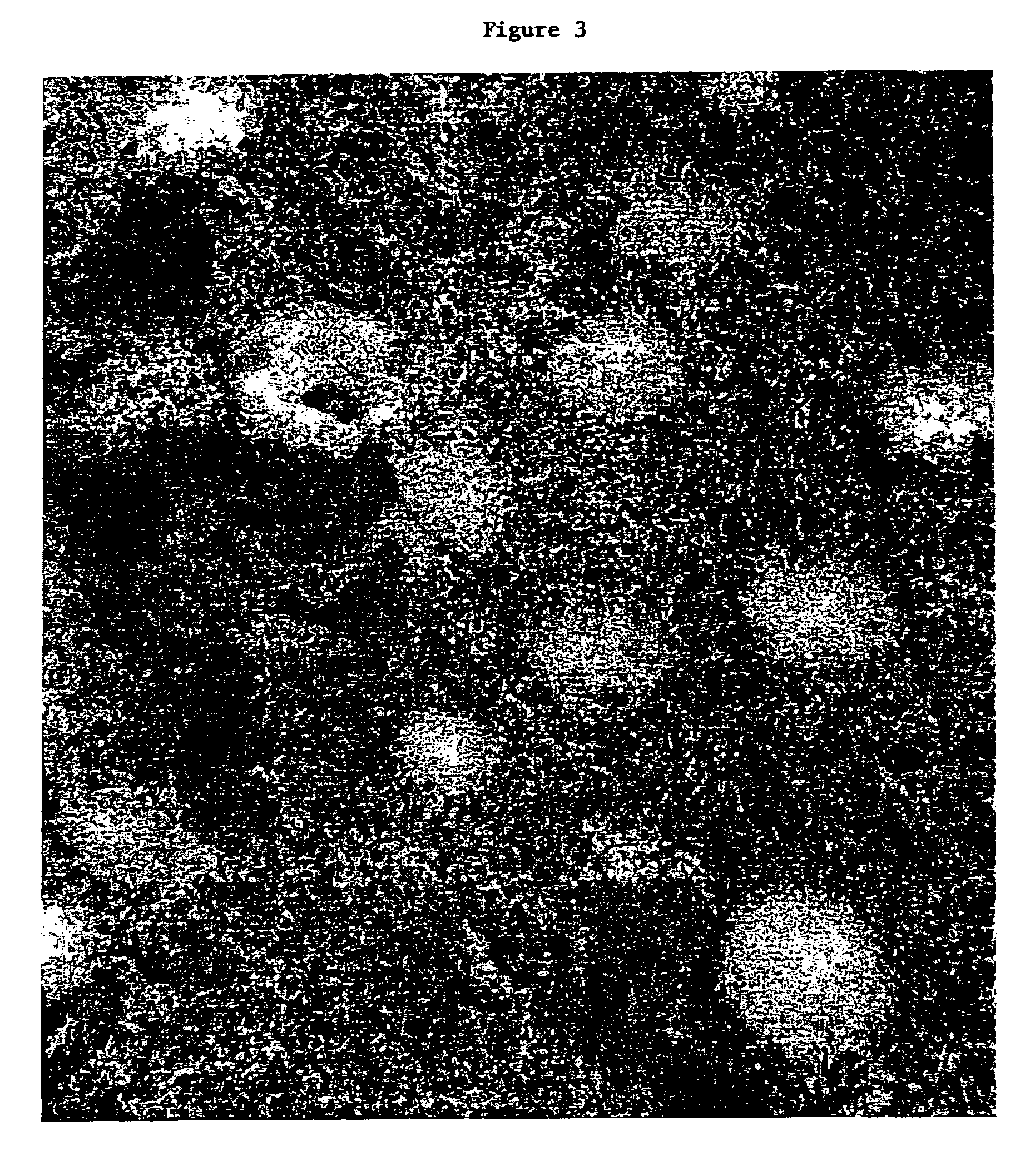Elastic blends comprising crystalline polymer and crystallizable polymers of propylene
a technology of crystallization polymer and polymer, which is applied in the field of elastic blends comprising crystalline polymer and crystallization polymer of propylene, can solve the problems of only achieving good compatibility, and achieve the effects of improving compatibility, good compatibility, and improving adhesion
- Summary
- Abstract
- Description
- Claims
- Application Information
AI Technical Summary
Benefits of technology
Problems solved by technology
Method used
Image
Examples
example 1
Ethylene / Propylene Copolymerization to Form the Second Polymer Component
Continuous Polymerization of the SPC was conducted in a 9 liter Continuous Flow Stirred Tank Reactor using hexane as the solvent. The liquid full reactor had a residence time of 9 minutes and the pressure was maintained at 700 kpa. A mixed feed of Hexane, ethylene and propylene was pre-chilled to approximately −30° C. to remove the heat of polymerization, before entering the reactor. Solution of catalyst / activator in Toluene and the scavenger in hexane were separately and continuously admitted into the reactor to initiate the polymerization. The reactor temperature was maintained between 35 and 50 C, depending on the target molecular weight. The feed temperature was varied, depending on the polymerization rate to maintain a constant reactor temperature. The polymerization rate was varied from about 0.5 Kg / hr to about 4 Kg / hr.
Hexane at 30 Kg / hr was mixed with ethylene at 717 g / hr and propylene at 5.14 Kg / hr and f...
example 2
Comparative Ethylene / Propylene Polymerization where the Propylene Residues are Atactic
Polymerizations were conducted in a 1 liter thermostated continuous feed stirred tank reactor using hexane as the solvent. The polymerization reactor was full of liquid. The residence time in the reactor was typically 7-9 minutes and the pressure was maintained at 400 kpa. Hexane, ethene and propene were metered into a single stream and cooled before introduction into the bottom of the reactor. Solutions of all reactants and polymerization catalysts were introduced continuously into the reactor to initiate the exothermic polymerization. Temperature of the reactor was maintained at 45° C. by changing the temperature of the hexane feed and by using cooling water in the external reactor jacket. For a typical polymerization, the temperature of feed was about−10° C. Ethene was introduced at the rate of 45 gms / min and propene was introduced at the rate of 310 gms / min. The polymerization catalyst, dimethy...
example 3
Analysis and Solubility of Several Second Polymer Components
In the manner described in Example 1 above, several second polymer components of the above specification were synthesized. These are described in the table below. Table 1 describes the results of the GPC, composition, ML and DSC analysis for the polymers.
TABLE 1Melting(Mw)EthyleneHeat ofPointML(Mn) bybywt. %fusionby DSC(1 + 4)@ 1SPCGPCGPCby IRJ / g(° C.)25° C.SPC-11020002489007.371.984.714SPC-29.430.265.227.8SPC-312470026590011.617.143.023.9SPC-412.816.442.5SPC-514.713.247.838.4SPC-612190031890016.47.840.333.1SPC-717.85.339.5Comparative PolymersEPR47.8notnot40detecteddetectedAePP11.7notnot23detecteddetected
Table 1: Analysis of the second polymer component and the comparative polymers
Table 2 describes the soluility of the second polymer component
TABLE 2Wt. %Wt. %Wt. %Wt. %soluble atsoluble atsoluble atsoluble atSPC23° C.31° C.40° C.48° C.SPC-11.02.928.368.5SPC-36.595.7SPC-651.652.32.6SPC-536.564.2Comparative PolymersEPR101.7ae...
PUM
| Property | Measurement | Unit |
|---|---|---|
| size | aaaaa | aaaaa |
| melting point | aaaaa | aaaaa |
| melting point | aaaaa | aaaaa |
Abstract
Description
Claims
Application Information
 Login to View More
Login to View More - R&D
- Intellectual Property
- Life Sciences
- Materials
- Tech Scout
- Unparalleled Data Quality
- Higher Quality Content
- 60% Fewer Hallucinations
Browse by: Latest US Patents, China's latest patents, Technical Efficacy Thesaurus, Application Domain, Technology Topic, Popular Technical Reports.
© 2025 PatSnap. All rights reserved.Legal|Privacy policy|Modern Slavery Act Transparency Statement|Sitemap|About US| Contact US: help@patsnap.com



